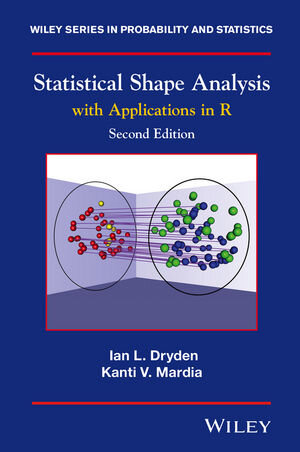
×
![Buchcover ISBN 9781119072508]()
„This is really an excellent, masterly, authoritative book about the statistical shapeand size-and-shape analysis of landmark data. It provides the conceptual elementsand then specific relationships and equations, working toward the various applications. The main results and equations are given in the text. In addition, there is a lot ofinformation about how to use the tools... The book is well written with a well-integrated system ofterms, notations, and derivations. Numerous elements on the historical background areprovided. The reviewer highly recommends the reading of this book.“ (Mathematical Reviews/MathSciNet, July 2017)
„Statistical methods applied to shapeanalysis. Great for biologists, but strongmathematical treatment and accompanyingcode expands possible applications.“ (Raspberry Pi, March 2017)
A thoroughly revised and updated edition of this introduction to modern statistical methods for shape analysis
Shape analysis is an important tool in the many disciplines where objects are compared using geometrical features. Examples include comparing brain shape in schizophrenia; investigating protein molecules in bioinformatics; and describing growth of organisms in biology.
This book is a significant update of the highly-regarded `Statistical Shape Analysis' by the same authors. The new edition lays the foundations of landmark shape analysis, including geometrical concepts and statistical techniques, and extends to include analysis of curves, surfaces, images and other types of object data. Key definitions and concepts are discussed throughout, and the relative merits of different approaches are presented.
The authors have included substantial new material on recent statistical developments and offer numerous examples throughout the text. Concepts are introduced in an accessible manner, while retaining sufficient detail for more specialist statisticians to appreciate the challenges and opportunities of this new field. Computer code has been included for instructional use, along with exercises to enable readers to implement the applications themselves in R and to follow the key ideas by hands-on analysis.
Statistical Shape Analysis: with Applications in R will offer a valuable introduction to this fast-moving research area for statisticians and other applied scientists working in diverse areas, including archaeology, bioinformatics, biology, chemistry, computer science, medicine, morphometics and image analysis
.
Shape analysis is an important tool in the many disciplines where objects are compared using geometrical features. Examples include comparing brain shape in schizophrenia; investigating protein molecules in bioinformatics; and describing growth of organisms in biology.
This book is a significant update of the highly-regarded `Statistical Shape Analysis' by the same authors. The new edition lays the foundations of landmark shape analysis, including geometrical concepts and statistical techniques, and extends to include analysis of curves, surfaces, images and other types of object data. Key definitions and concepts are discussed throughout, and the relative merits of different approaches are presented.
The authors have included substantial new material on recent statistical developments and offer numerous examples throughout the text. Concepts are introduced in an accessible manner, while retaining sufficient detail for more specialist statisticians to appreciate the challenges and opportunities of this new field. Computer code has been included for instructional use, along with exercises to enable readers to implement the applications themselves in R and to follow the key ideas by hands-on analysis.
Statistical Shape Analysis: with Applications in R will offer a valuable introduction to this fast-moving research area for statisticians and other applied scientists working in diverse areas, including archaeology, bioinformatics, biology, chemistry, computer science, medicine, morphometics and image analysis
.




